-
 Bitcoin
Bitcoin $101,885.2651
-0.96% -
 Ethereum
Ethereum $2,241.4771
-2.19% -
 Tether USDt
Tether USDt $1.0003
-0.01% -
 XRP
XRP $2.0230
-3.06% -
 BNB
BNB $622.7870
-1.84% -
 Solana
Solana $134.1802
-1.39% -
 USDC
USDC $0.9999
-0.02% -
 TRON
TRON $0.2673
-2.01% -
 Dogecoin
Dogecoin $0.1539
-2.02% -
 Cardano
Cardano $0.5489
-1.39% -
 Hyperliquid
Hyperliquid $35.4321
3.12% -
 Bitcoin Cash
Bitcoin Cash $455.5100
-1.48% -
 Sui
Sui $2.5070
-3.31% -
 UNUS SED LEO
UNUS SED LEO $9.0530
0.93% -
 Chainlink
Chainlink $11.8065
-2.10% -
 Stellar
Stellar $0.2311
-2.96% -
 Avalanche
Avalanche $16.8439
-0.69% -
 Toncoin
Toncoin $2.7521
-4.05% -
 Shiba Inu
Shiba Inu $0.0...01078
-1.60% -
 Litecoin
Litecoin $80.6245
-1.52% -
 Hedera
Hedera $0.1367
-0.74% -
 Monero
Monero $303.5650
-2.41% -
 Ethena USDe
Ethena USDe $1.0006
-0.01% -
 Dai
Dai $1.0000
-0.01% -
 Polkadot
Polkadot $3.2265
-2.56% -
 Bitget Token
Bitget Token $4.0677
-3.51% -
 Uniswap
Uniswap $6.2998
-2.54% -
 Pi
Pi $0.5072
-0.68% -
 Pepe
Pepe $0.0...08930
-4.32% -
 Aave
Aave $231.6316
-1.51%
Which is better, PoW or PoS? A complete analysis of the consensus mechanism
PoW offers robust security but high energy use, while PoS is more eco-friendly and scalable, though it risks centralization; choice depends on specific blockchain needs.
May 29, 2025 at 12:49 pm
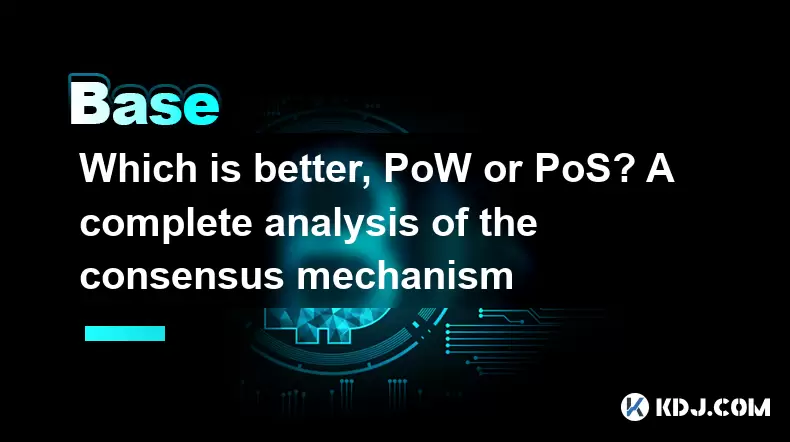
The debate between Proof of Work (PoW) and Proof of Stake (PoS) as consensus mechanisms in blockchain technology is a central topic within the cryptocurrency community. Both mechanisms serve the crucial function of validating transactions and adding them to the blockchain, but they do so in fundamentally different ways. This article will delve into a comprehensive analysis of PoW and PoS, examining their strengths, weaknesses, and real-world applications to help readers understand which might be better suited for specific use cases.
Understanding Proof of Work (PoW)
Proof of Work is the original consensus mechanism used by Bitcoin and many other cryptocurrencies. In PoW, miners compete to solve complex mathematical puzzles to validate transactions and add new blocks to the blockchain. The first miner to solve the puzzle gets to add the block and is rewarded with newly minted cryptocurrency and transaction fees.
The primary advantage of PoW is its security. The energy and computational power required to solve these puzzles make it extremely difficult for a single entity to control the majority of the network's mining power, thereby preventing a 51% attack. This high level of security has been one of the key factors in Bitcoin's success.
However, PoW also has significant drawbacks. The most notable is its energy consumption. The mining process requires vast amounts of electricity, leading to concerns about its environmental impact. Additionally, the need for specialized mining hardware can create barriers to entry, potentially centralizing mining power in the hands of those who can afford the equipment.
Understanding Proof of Stake (PoS)
Proof of Stake is an alternative consensus mechanism designed to address some of the shortcomings of PoW. In PoS, validators are chosen to create new blocks based on the number of coins they hold and are willing to "stake" as collateral. The more coins a validator stakes, the higher their chances of being selected to validate transactions and add new blocks.
One of the main advantages of PoS is its energy efficiency. Since there is no need for energy-intensive mining, PoS networks consume significantly less power than their PoW counterparts. This makes PoS a more environmentally friendly option.
Another benefit of PoS is its lower barrier to entry. Anyone with a sufficient number of coins can participate in the validation process without the need for specialized hardware. This democratizes the validation process and can lead to a more decentralized network.
However, PoS also has its challenges. One concern is the "rich get richer" phenomenon, where those with more coins have a greater chance of earning additional coins through staking. This could potentially lead to centralization over time. Additionally, PoS networks may be more vulnerable to certain types of attacks, such as nothing-at-stake attacks, where validators might be incentivized to validate multiple conflicting versions of the blockchain.
Security Comparison: PoW vs. PoS
When it comes to security, both PoW and PoS have their strengths and weaknesses. PoW's security is based on the difficulty of solving cryptographic puzzles, making it highly resistant to attacks. The energy and computational resources required to launch a 51% attack on a PoW network are prohibitively high for most actors.
On the other hand, PoS relies on economic incentives to maintain security. Validators have a financial stake in the network and stand to lose their staked coins if they engage in malicious behavior. While this can be an effective deterrent, some argue that PoS networks may be more susceptible to certain types of attacks, such as long-range attacks, where an attacker with a large stake could rewrite the blockchain's history.
Scalability and Performance
Scalability is another critical factor to consider when comparing PoW and PoS. PoW networks, like Bitcoin, have faced challenges in scaling due to the time and energy required to validate transactions. The block size and block time limitations can lead to slower transaction processing and higher fees during periods of high demand.
In contrast, PoS networks can potentially achieve higher scalability. Without the need for energy-intensive mining, PoS networks can process transactions more quickly and at a lower cost. This makes PoS a more attractive option for applications that require high transaction throughput, such as decentralized finance (DeFi) platforms.
Real-World Applications and Adoption
Both PoW and PoS have been adopted by various cryptocurrencies, each with its own set of use cases and community preferences. Bitcoin, the first and most well-known cryptocurrency, uses PoW and has established itself as a store of value and a medium of exchange. Its security and decentralization have been key factors in its widespread adoption.
On the other hand, Ethereum, one of the largest blockchain platforms, is in the process of transitioning from PoW to PoS with its Ethereum 2.0 upgrade. This shift is driven by the desire to improve scalability, reduce energy consumption, and enhance the overall efficiency of the network.
Other notable cryptocurrencies using PoS include Cardano and Tezos, both of which have focused on building scalable and sustainable blockchain ecosystems. These networks have attracted developers and users interested in building decentralized applications and participating in governance.
Environmental Impact
The environmental impact of PoW and PoS is a significant consideration for many in the cryptocurrency community. PoW's high energy consumption has led to criticism and calls for more sustainable alternatives. The mining process for Bitcoin, for example, consumes an estimated 120 terawatt-hours per year, comparable to the energy consumption of entire countries.
In contrast, PoS networks consume significantly less energy. The lack of mining hardware and the reliance on staking rather than computational power make PoS a more environmentally friendly option. This has led to increased interest in PoS among environmentally conscious investors and developers.
Conclusion
In conclusion, the choice between PoW and PoS depends on various factors, including security requirements, scalability needs, and environmental considerations. PoW offers robust security and has been the backbone of Bitcoin's success, but its energy consumption remains a significant drawback. PoS, on the other hand, provides a more energy-efficient and scalable alternative, though it may face challenges related to centralization and certain types of attacks.
Ultimately, the "better" consensus mechanism will depend on the specific use case and priorities of the blockchain project. Both PoW and PoS have their place in the cryptocurrency ecosystem, and understanding their strengths and weaknesses is essential for making informed decisions.
Frequently Asked Questions
Q: Can a blockchain switch from PoW to PoS?
A: Yes, a blockchain can transition from PoW to PoS, as seen with Ethereum's ongoing Ethereum 2.0 upgrade. This process involves significant technical changes and community consensus but can be done to improve scalability and reduce energy consumption.
Q: How does PoS prevent double-spending?
A: In PoS, validators are chosen to create new blocks based on their stake. If a validator attempts to double-spend by creating conflicting transactions, they risk losing their staked coins. This economic incentive helps prevent double-spending and maintain the integrity of the blockchain.
Q: Are there other consensus mechanisms besides PoW and PoS?
A: Yes, there are several other consensus mechanisms, including Delegated Proof of Stake (DPoS), Proof of Authority (PoA), and Practical Byzantine Fault Tolerance (PBFT). Each has its own set of advantages and use cases, catering to different needs within the blockchain space.
Q: How does the choice of consensus mechanism affect the decentralization of a blockchain?
A: The choice of consensus mechanism can significantly impact the decentralization of a blockchain. PoW can lead to centralization due to the need for specialized mining hardware, while PoS may centralize power in the hands of those with large stakes. However, both mechanisms can be designed to promote decentralization through various incentives and governance structures.
Disclaimer:info@kdj.com
The information provided is not trading advice. kdj.com does not assume any responsibility for any investments made based on the information provided in this article. Cryptocurrencies are highly volatile and it is highly recommended that you invest with caution after thorough research!
If you believe that the content used on this website infringes your copyright, please contact us immediately (info@kdj.com) and we will delete it promptly.
- BNB Price Check: Stablecoin Surge vs. Prediction Rollercoaster
- 2025-06-23 14:25:12
- Metaplanet's Bitcoin Bonanza: Holdings Skyrocket Amidst Market Swings
- 2025-06-23 14:25:12
- Altcoins Under Pressure: Cardano and XRP Face Critical Tests
- 2025-06-23 12:25:12
- Rare Coin Fever in Wiltshire: Auctions, Errors, and Olympic Gold!
- 2025-06-23 12:25:12
- XRP Price Under Pressure: War Fears and Market Sentiment
- 2025-06-23 12:30:12
- HAI Token Private Key Leak: What Happened and How to Stay Safe
- 2025-06-23 12:45:12
Related knowledge
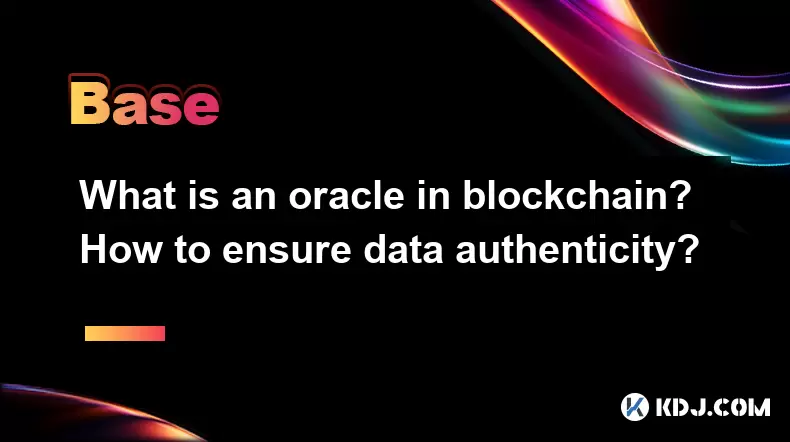
What is an oracle in blockchain? How to ensure data authenticity?
Jun 19,2025 at 08:49pm
Understanding the Role of an Oracle in BlockchainIn the context of blockchain technology, an oracle serves as a bridge between the blockchain and external data sources. While blockchains are inherently secure and decentralized, they cannot access real-world information on their own. Oracles enable smart contracts to interact with off-chain data such as ...
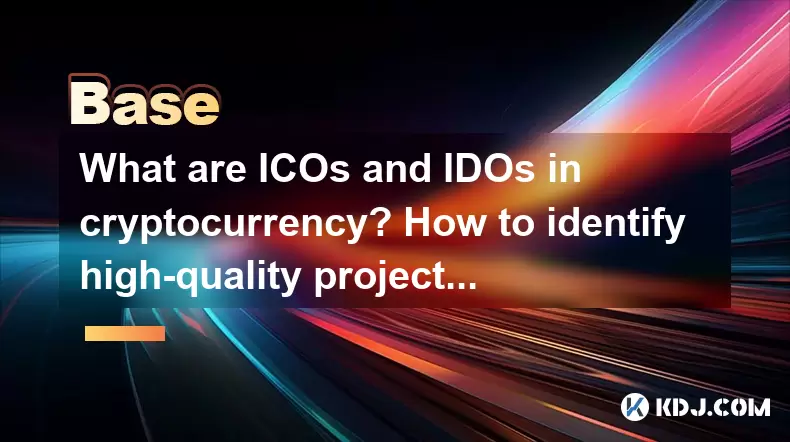
What are ICOs and IDOs in cryptocurrency? How to identify high-quality projects?
Jun 22,2025 at 11:49am
Understanding ICOs in CryptocurrencyInitial Coin Offerings (ICOs) are fundraising mechanisms used by cryptocurrency startups to raise capital for their projects. In an ICO, a company creates and sells its own tokens to investors in exchange for established cryptocurrencies like Bitcoin or Ethereum. The process typically involves the release of a whitepa...
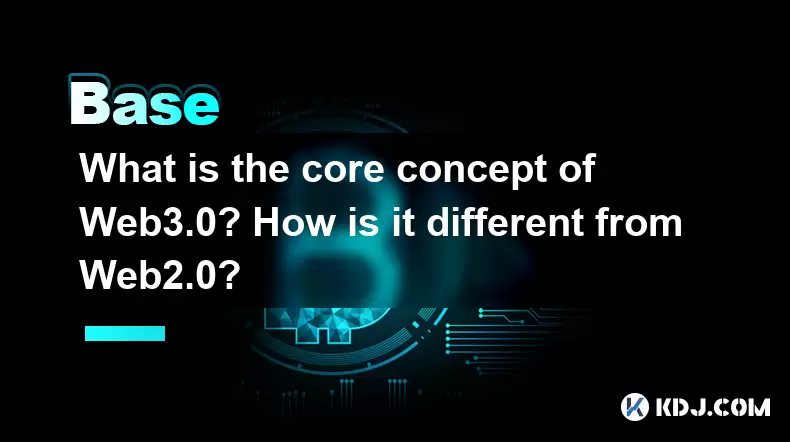
What is the core concept of Web3.0? How is it different from Web2.0?
Jun 21,2025 at 05:56pm
Decentralization as the Foundation of Web3.0The core concept of Web3.0 revolves around decentralization, which fundamentally challenges the centralized architecture of Web2.0. In Web3.0, control and ownership are distributed across a network rather than being held by a central authority or corporation. This is achieved primarily through blockchain techn...
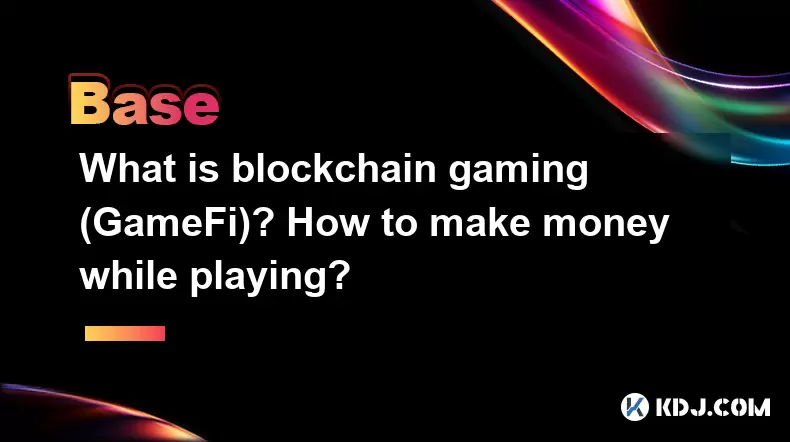
What is blockchain gaming (GameFi)? How to make money while playing?
Jun 20,2025 at 07:56am
Understanding Blockchain Gaming (GameFi)Blockchain gaming, often referred to as GameFi, is a fusion of blockchain technology and video games. It enables players to own in-game assets through non-fungible tokens (NFTs) and earn rewards via cryptocurrencies or token-based systems. Unlike traditional games where items are controlled by centralized develope...
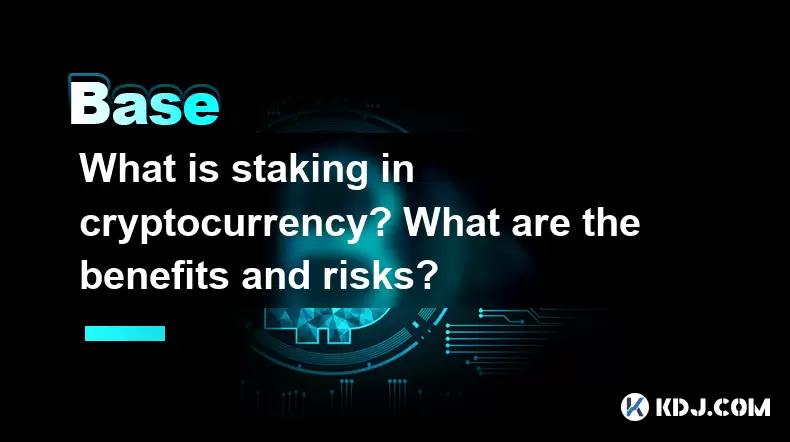
What is staking in cryptocurrency? What are the benefits and risks?
Jun 22,2025 at 10:01am
Understanding the Concept of Staking in CryptocurrencyStaking in cryptocurrency refers to the process of actively participating in transaction validation on a blockchain network that uses a Proof-of-Stake (PoS) consensus mechanism. Instead of miners competing to solve complex mathematical puzzles as in Proof-of-Work systems like Bitcoin, PoS blockchains...
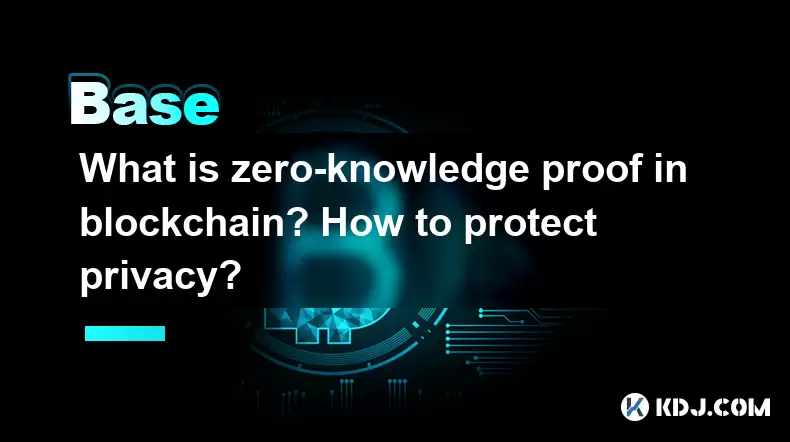
What is zero-knowledge proof in blockchain? How to protect privacy?
Jun 20,2025 at 06:28am
Understanding Zero-Knowledge Proof in BlockchainZero-knowledge proof (ZKP) is a cryptographic method that allows one party to prove to another that they know a value or piece of information without revealing the actual data. In the context of blockchain, this concept plays a crucial role in enhancing privacy and security while maintaining the integrity ...

What is an oracle in blockchain? How to ensure data authenticity?
Jun 19,2025 at 08:49pm
Understanding the Role of an Oracle in BlockchainIn the context of blockchain technology, an oracle serves as a bridge between the blockchain and external data sources. While blockchains are inherently secure and decentralized, they cannot access real-world information on their own. Oracles enable smart contracts to interact with off-chain data such as ...

What are ICOs and IDOs in cryptocurrency? How to identify high-quality projects?
Jun 22,2025 at 11:49am
Understanding ICOs in CryptocurrencyInitial Coin Offerings (ICOs) are fundraising mechanisms used by cryptocurrency startups to raise capital for their projects. In an ICO, a company creates and sells its own tokens to investors in exchange for established cryptocurrencies like Bitcoin or Ethereum. The process typically involves the release of a whitepa...

What is the core concept of Web3.0? How is it different from Web2.0?
Jun 21,2025 at 05:56pm
Decentralization as the Foundation of Web3.0The core concept of Web3.0 revolves around decentralization, which fundamentally challenges the centralized architecture of Web2.0. In Web3.0, control and ownership are distributed across a network rather than being held by a central authority or corporation. This is achieved primarily through blockchain techn...

What is blockchain gaming (GameFi)? How to make money while playing?
Jun 20,2025 at 07:56am
Understanding Blockchain Gaming (GameFi)Blockchain gaming, often referred to as GameFi, is a fusion of blockchain technology and video games. It enables players to own in-game assets through non-fungible tokens (NFTs) and earn rewards via cryptocurrencies or token-based systems. Unlike traditional games where items are controlled by centralized develope...

What is staking in cryptocurrency? What are the benefits and risks?
Jun 22,2025 at 10:01am
Understanding the Concept of Staking in CryptocurrencyStaking in cryptocurrency refers to the process of actively participating in transaction validation on a blockchain network that uses a Proof-of-Stake (PoS) consensus mechanism. Instead of miners competing to solve complex mathematical puzzles as in Proof-of-Work systems like Bitcoin, PoS blockchains...

What is zero-knowledge proof in blockchain? How to protect privacy?
Jun 20,2025 at 06:28am
Understanding Zero-Knowledge Proof in BlockchainZero-knowledge proof (ZKP) is a cryptographic method that allows one party to prove to another that they know a value or piece of information without revealing the actual data. In the context of blockchain, this concept plays a crucial role in enhancing privacy and security while maintaining the integrity ...
See all articles
























































































